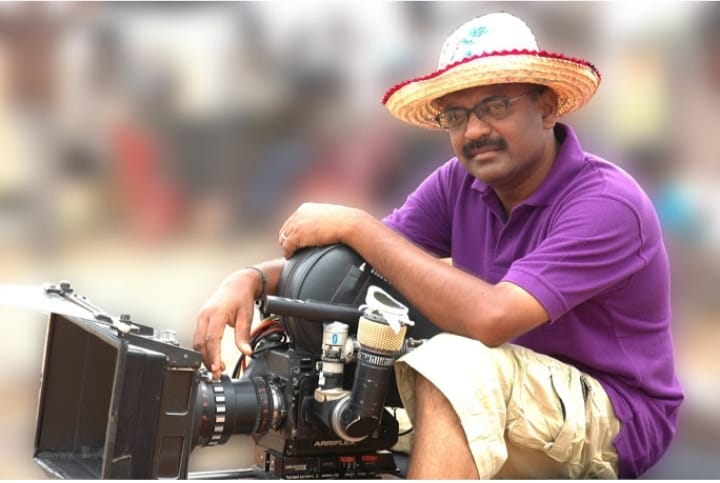
In Conversation: DOP Ramanath Shetty
Jun 27 2021
Ramanath Shetty is most popular cinematographer who had cranked camera for award winning films like Pazhassi Raja, Mirugam and currently he is also successful as a seasoned actor in both television and feature films.
His contribution to SICA as treasurer is noteworthy.
Ramanath Shetty shares his film journey with SICA.
How did you get interest in films and cinematography?
My earliest influences were Ashok kumar and Balu Mahendra . My native is Karaikudi and later along with my family shifted to Chennai. I did a 6 months crash course in photography in one of the institutes located in T Nagar, it was not a recognized institute from government of Tamilnadu. Those days I saw an advertisement in Dhinathanthi for the admission for cinematography course in Adayar film institute. And I enrolled for it. I cleared interview with merit.

How was your experience with the six-month crash course?
I consider it as my most important learning. I learnt about black and white photography and printing there with final one week I was taught with color photography . But whatever I learnt there paved my way into the world of understanding photography and cinematography even deeper.
While being a student at Adayar you handled camera in one of the feature films, how you got that opportunity and how was your experience?
When I completed my first year at film institute by the same time Ramesh kumar sir finished his debut feature film “Oomai Vizhigal” and the film faced censor issues, during that period I got the opportunity to meet Aabavanan and team of “oomai vizhigal”. And with the help of one of my friend Chandrasekhar I was introduced to Ramesh kumar. I requested for the opportunity to assist him but since I was in the learning period, he asked me to complete it first but in the meanwhile I was allowed to join him in the shoot during free time. I consider him as my Guru. In his second film “Uzhavan Magan” Ramesh kumar sir went for a multi camera setup for the rekla race scene, first of its kind in south Indian cinema. He totally used 9 cameras with anamorphic lenses and I had the privilege to observe the making..I was just in my second year. Later I assisted him in Thainadu also and few segments of Captain Prabhakaran.
By the time I completed my graduation he gave me the opportunity to handle the second camera independently in Thainadu. He gave me complete freedom and never pointed out any of my mistakes while shooting. For instance… during a night shoot I had to tilt down from a practical lamp source to the ground where characters are there I lit up for exposure T 2.8 I had positioned camera with crane at top as B camera setup …Ramesh kumar who was watching from a distance after shot rolled pointed out that Practical lamp source brightness was more than 4 stops ..i choose a wrong exposure , He prefers more of “learn from your own mistake” this helped me a lot in my career.
How welcoming was film industry towards film students?
Again the credit goes to Ramesh kumar sir. In fact, the whole team of Oomai vizhigal right from Aabavanan, director Aravind Raj everyone was so passionate towards making different kind of films. Though it was very difficult for them to make a mark as the industry was not very much used to film students until then but they paved way for many next generation and upcoming film students. It doesn’t mean there were no film students working in the industry before this team basically I meant Aabavanan and team was first to express proudly as “A film by film students” which was written right from audio cassette covers. everywhere and the songs of Oomai Vizhigal was hit even before film got released.
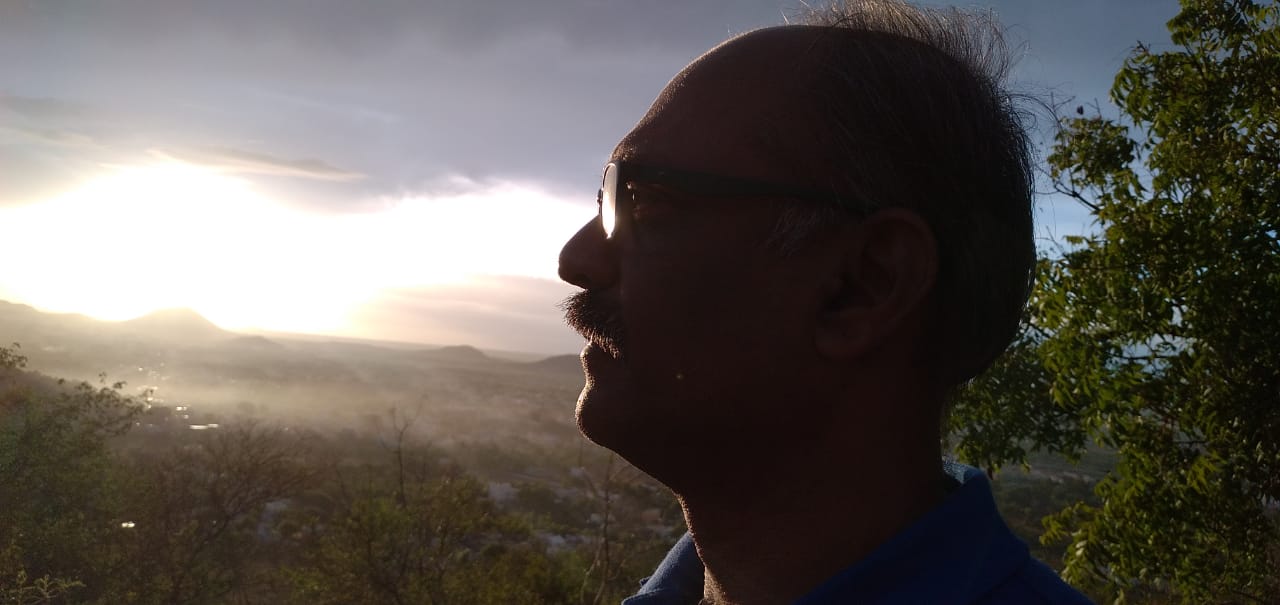 Along with many compliments there were few criticisms too that film students take longer time for setting up the lights prefer more night shoots and resulting in significant production cost. What is your take on this?
Along with many compliments there were few criticisms too that film students take longer time for setting up the lights prefer more night shoots and resulting in significant production cost. What is your take on this?
AR Rahman usually works at night. But he delivers better album with each film. Everyone has a working process and one should always see that the person is delivering a better output or not. Perfection needs time. Night shoot gave better look for the film which needed more contrast. Mostly film students took good care of aesthetics in the making of a film. For instance, Vijayakanth used to make fun of us that only to move a camera by just half a feet we asked for one more take, but even a small distance change in camera position brings a new perspective and composition. But he also understood our passion and was so co operative with us for the better outcome of the shot.
How difficult it was to shoot with tungsten lights?
As a cinematographer I would always prefer tungsten light over HMI but as an actor I would prefer HMI as tungsten creates a lot of heat and that hinders while performing but on the other hand when I am behind the camera nothing matches like the tungsten light, it creates life like color rendition and sharp shadows.
What were the challenges in shooting in your early days?
Back then everything has to be done on location. There weren’t much of post-production work for the look of the film like it is today. So a proper pre planning and a great amount of responsibility was on the cinematographer’s shoulder because most of the things once shot cannot be rectified and of course the production cost were all needed to be taken care of.
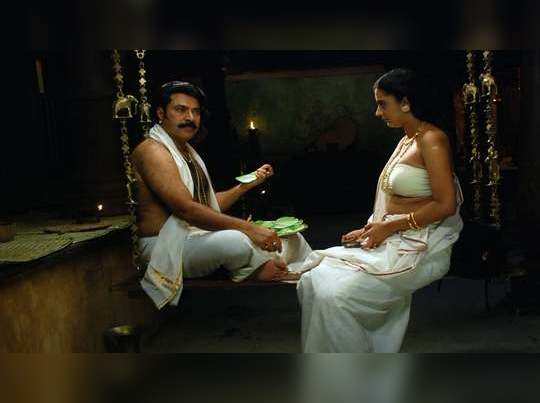 Tell us about your experience in “Pazhassi Raja”?
Tell us about your experience in “Pazhassi Raja”?
First of all the film had a huge expectation cause the amount of talents came together to make that grandeur. Director Hariharan, Mammooty, Ilayaraja and editor Sreekar Prasad such a huge and highly talented technical crew. The moment I met Hariharan sir I said to him I watched your films as a film student and today I am shooting for you it was a proud moment for me. I should mention art director Muthuraj who happens to be a friend of mine referred me for this film. Before finalizing me as a cinematographer Hariharan saw only 5 minutes of Mirugam which was shot by me and he was impressed and agreed to sign me as cinematographer for Pazhassi Raja. It all happened in a matter of just one day. I was selected as cinematographer and immediately I was asked reach Kerala for the shoot.
First day shoot of mine was supposed to be a CG shot. But unfortunately, the CG person was not able to come from Chennai on that day. Everyone including the director were worried as this will result in lots of expenses but I was confident that I can shoot the scene without the CG person by multiplication process. I learnt multiplication while I had worked for Cinematographer Binod Pradhan in Rang de Basanti.
I used fix the camera analyzed the whole set where crowd to be stationed Hariharan sir himself would position artists at the spot and took good care of the scene so that I get the desired outcome required.
How did you multiply a group of 50 people to 350 people? It is still a huge task.
It was an over the shoulder shot. What I did here is I shot 7 plates (times) with 50 people .. unlike just normal multiplication where we just multiply 50 people once.
With each plate I had positioned people in a way to maintain diminishing perspective.. This gave more natural look and organic look . Hariharan sir was hugely impressed and gave me complete freedom.
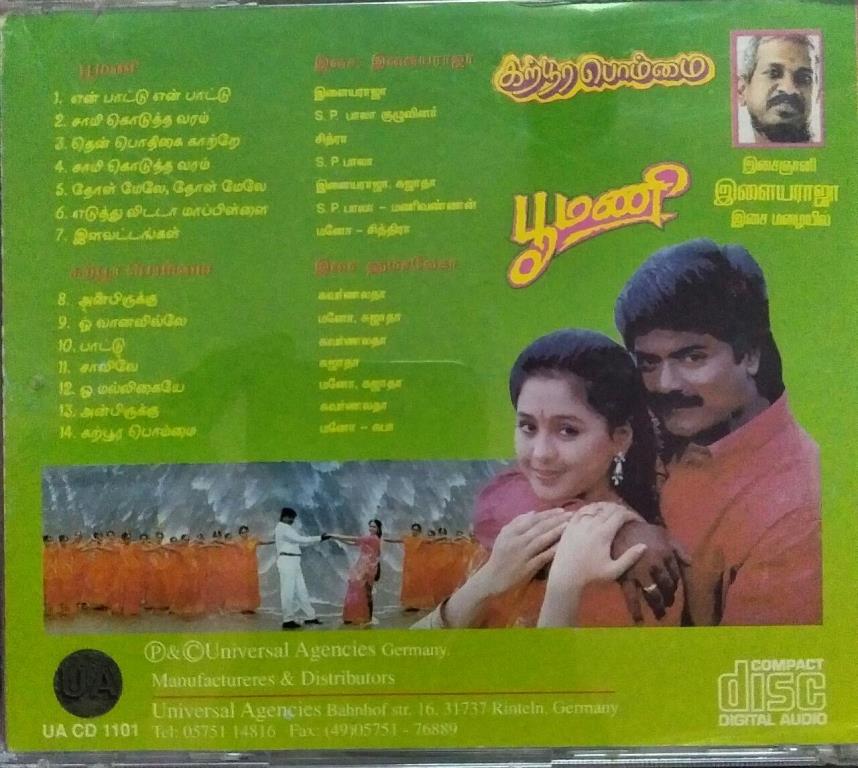 How did you get your debut fim?
How did you get your debut fim?
I was assisting gym ganesh. And my first film was Poomani directed by Kalanjiyam. I was very excited as it was touted to be a comeback film for Ilayaraja. The film had some beautiful songs like Thol mela thol mela, En paatu which were all shot in twilight and I was appreciated for the look. .a song sequence had a waterfall shot Raja sir while background score asked us to put that specific shot in reverse, we did it with help of optical effects at Prasad labs.
After movie got released I went to watch that film in a theatre in Gobichettypalayam and my eyes were filled with tears when audience started applauding the shot and shouting once more for that song sequence.
Even Director Manivanan sir appreciated the contrast look and the cameo lighting technique which were not that common in a film with village backdrop. I learnt this technique from Binod Pradhan from his movie Parindha.
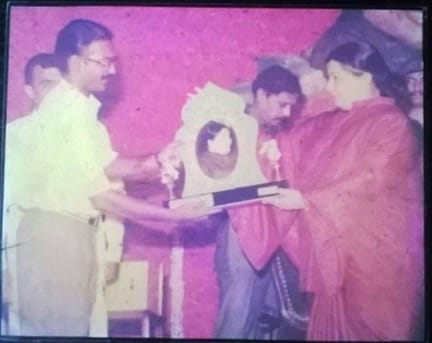 Working with Prabhudeva ? Tell about that experience.
Working with Prabhudeva ? Tell about that experience.
Allaudin was directed by Ravi Chakravarthy. It got huge applause for the final end cut of the trailer. The trailer gave a huge boost for the film expectation. But actually the shot at the end of trailer was shot by Vijay Chakravarthy who worked as associate cinematographer with me later he became popular DOP in Telugu film Industry. The trailer had a huge impact though the film didn’t perform well at the box office.
Coming to Prabhu Deva he is very professional and always very creative when it comes to song picturization as a cinematographer we have to work with many technicians with different background still maintain our core strength.
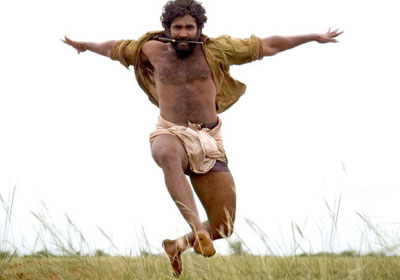 Mirugam gave you a huge recognition, tell about that experience.
Mirugam gave you a huge recognition, tell about that experience.
Mirugam was directed by Sami and I was not the first choice for the film. It would have been MS prabhu or Mahesh Muthuswamy. But as they were occupied with other projects they only referred me for the project and rest as everyone knows it gave me huge recognition. A set was erected in Madurai and it was the month of April. It was so hot that even the carpenters worked during night times and asked for only one shift wages. I shot it in ARRI 3 and cine vision lens. Director Arivalaghan after seeing the film once asked was there any DI done? And the film looks fantastic. I said only the climax scene was done DI and neither any filter used. We did only the grading and gave that sepia tone.
You have used wide lens beautifully while your contemporary cinematographers like Jeeva mostly went for tele lens. What is the reason?
I did it to exploit the vastness. We went for full wide. The emptiness in the screen was an added beauty to the mood of the film. Director was very confident; he liked that wide angle lens view.
The rain effect in Pazhassi Raja was fantastically captured, even the action scenes was stunning.
We wanted to bring all 5 natural elements into the film as a part of narration and rain effect was one of it. filming part I had carefully choose the background which had dark spaces also sky was deeper ..for creating rain we used basic fire engine.
Resul pookutty who happens to be the sound designer saw the film and said it was shot very realistically he can feel the monsoon effect in the closed room. Stunt Director Ravi Dewan did action set pieces for Pazhassi Raja. He has previously worked in films like Jodha Akbar so Director Hariharan wanted him to be the stunt coordinator for this project. He had all safety equipment required for a film. There was scene where Manoj k jayan has to slide through rope and I was above him, it was supposed to be taken as a bird’s eye view. As there were no drone back then he tied a rope above that manoj k Jayan and made me to slide through rope to get that bird’s eye view. Manoj K Jayan was very scared to perform so a body double has done that part but for me it was a very enjoyable experience. To make me feel safe Ravi Dewan first did the slide and made sure I feel safe and comfortable.
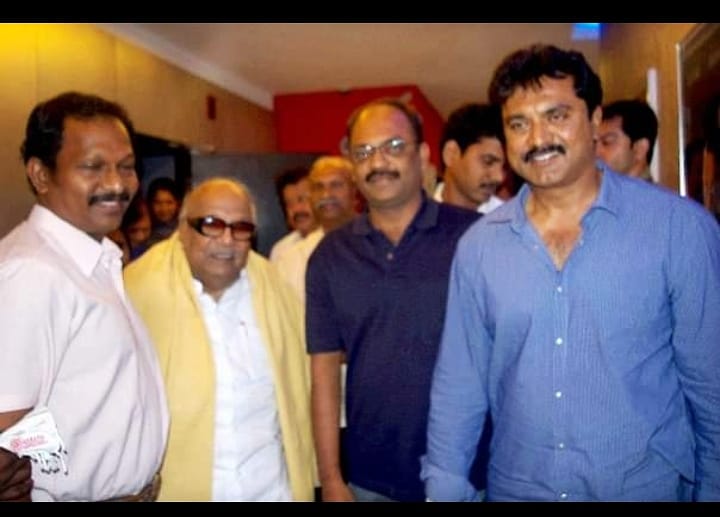 The action sequence were well choreographed. How many cameras were used?
The action sequence were well choreographed. How many cameras were used?
3 cameras were used to go multiple angles. I would take this moment to appreciate the art department who worked day and night for 175 days in set and art work. The film had a huge expectation as the team of Mammooty, Hariharan, MT Vasudevan sir were joining hands after 25 years as there previous outing Oru vadakkan veeragatha was a trendsetting film in Malayalam cinema.
 When the digital came you shot tenali raman. How was your experience with this new technology?
When the digital came you shot tenali raman. How was your experience with this new technology?
Tenali Raman was my first film with digital camera i used RED cinema camera. shooting took place for 70 days in AVM Studio indoors only 5 days were shot in kuttralam. One of the song in the movie with vadivelu was well appreciated for the flame effect. I used cameo lighting for the sequence. I used 8 numbers of 2kw light in one soft box with nearly 7 setups to light the large set.
why did you use Soft box lights rather than kino flo?
Kino flo is large source light it is difficult to control it.. where as i wanted to create a Soft illumination still maintain contrast and also avoid the light spill over backgrounds.. so Large soft boxes with black curtains was ideal.
while filming the climax where it features Dual roles of Vadivelu one character rides a horse from shadow region to the other at Direct evening light.
Exposure at both the ends are beyond camera dynamic range.
So I used HDR option in the RED cinema camera to get right exposure to bring shadow details and also hold bright light… I also got appreciation for the visuals.
Your experience as a treasurer at SICA
After winning election under leadership of PC Sreeram and B.Kannan we as a team brought lot of welfare activities for members and all were committed upon their role at SICA. We had healthy discussions, workshops, film screenings.
SICA website was a brain child of PC Sreeram as a treasurer at SICA once I asked PC Sreeram that some money will involve in developing and maintaining a website. But as a President he want SICA to have a strong knowledge platform and we went for it…But to everyone’s surprise the first year itself we earned around 20 lakhs from SICA website through advts only.
Currently due to professional commitments not able to continue as a treasurer for SICA.
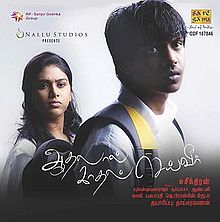 How you shifted from a cinematographer to actor?
How you shifted from a cinematographer to actor?
Director Suseentharan and my friend Actor Arul dass came to my home and offered me a father’s role for the lead actor. I said isn’t father’s role too old for me. They said you are 45 now and the lead actor’s role is 22 in this film you are apt for this role. I attended an one month workshop on acting along with the lead actor in Suseentharn’s office.
From a being a seasoned actor now in serials and films, do you miss cinematography?
Not really. In filmmaking everything is important. Be it acting or handling camera both are part of film making and feeling happy for the good reputation I had earned both as a cinematographer and actor.
Can you Differentiate as an actor between film and television
For me as a film student i graduated from Film and Television institute..so for me both are important visual media as an actor i always trust Director and follow their instructions, now web series, OTT platforms are emerging. Actors approach doesnt change for the medium, it for narrative and Directors who treat it.
Name an actor whose performance makes you completely awe struck?
Kamal Hassan. When we are shooting a full shot its very difficult as actor to what to do with your hands and legs. You can simply stand and deliver dialogues. Kamal sir is a master in this. I have learnt a lot from him both as a technician and an actor.
what would you like to say to the upcoming cinematographers?
Don’t be shy about what you don’t know. I learnt discipline from Ramesh kumar sir. You should always keep up your words. Be true to yourself and to your profession.
Once I got the opportunity to meet Balu mahendra.. I asked him why the sky in your frames is so beautiful compared to the other cinematographers with the same location is not that appealing. He said OBSERVATION. You should always observe nature. I shoot the same location at the specific month at the specific time of the day. So observe your surroundings.
Next is art of appreciation is important…I once messaged Vijay Milton to appreciate his cinematography for Vazhakku en 18/9 which was shot in 5D camera and I still remember his reply which he sent me; Appreciation comes only from people who have confidence in their profession.
Article drafted by : Vigneshwari.S and Arun.S.Manohar
Edited by : C.J.Rajkumar Author/Cinematographer
